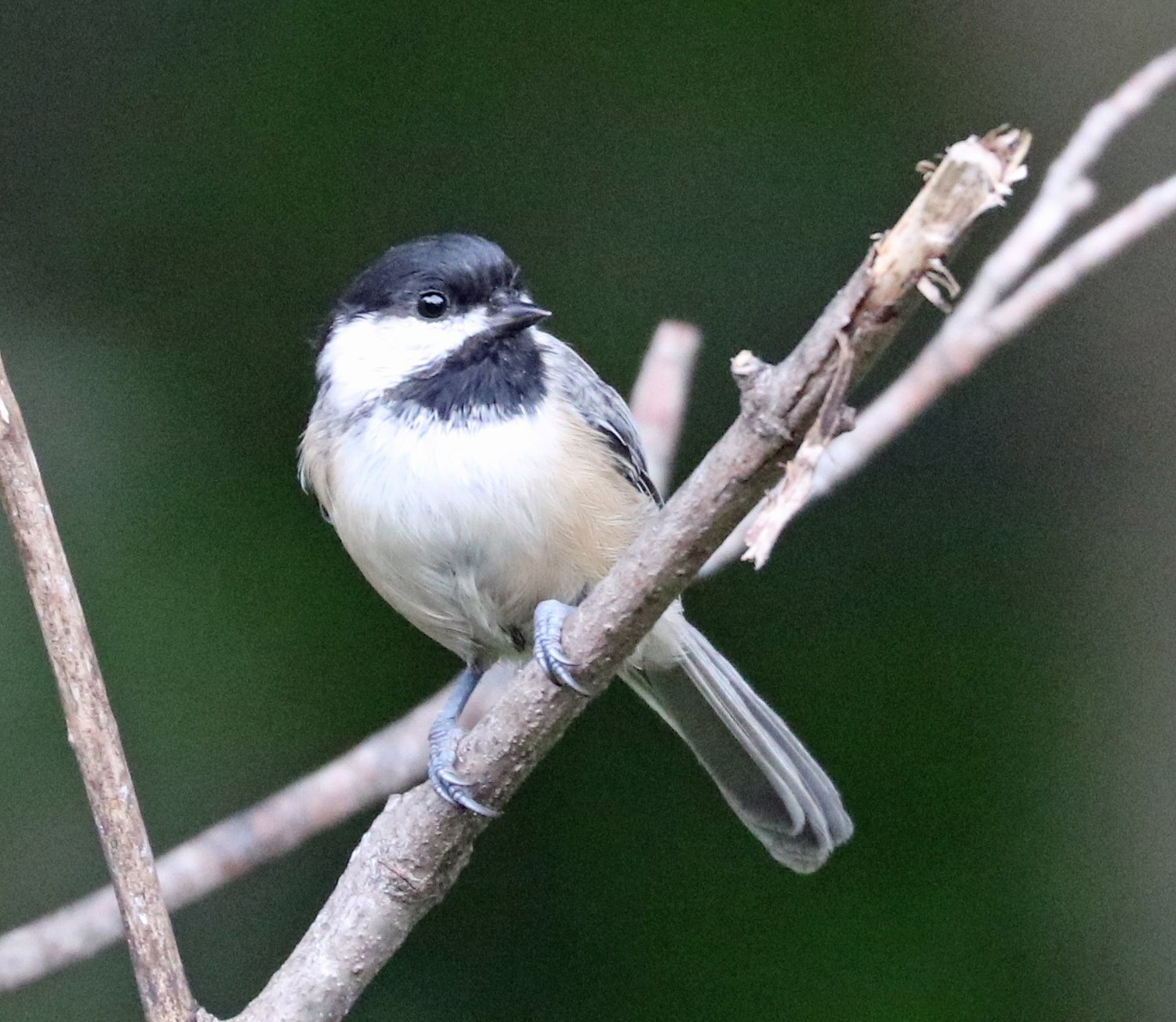In the serene embrace of the wilderness, where trees stand sentinel and the air resonates with the songs of nature, the Black-Capped Chickadee emerges as a small yet remarkable avian marvel. This tiny bird, easily recognizable by its distinctive black cap and cheerful disposition, serves not just as a beautiful component of our ecosystem but also as a symbol of deeper meanings. The Black-Capped Chickadee encapsulates themes of resilience, adaptability, and the importance of interconnectedness within nature. As we dive into the world of this charming creature, we unravel the threads of its existence and explore its relevance to our lives.
The Black-Capped Chickadee (Poecile atricapillus) is a non-migratory bird primarily found across North America. With its cheerful “chick-a-dee-dee-dee” call, it draws attention, inviting observers to share in its vibrant world. This call, a psychological signal, varies in intensity and frequency and serves a functional purpose—it acts as an alarm, warning fellow birds of impending danger. The greater the threat, the more “dees” are included in the call, showcasing the bird’s remarkable ability to communicate complex messages through sound. This trait exemplifies how the Chickadee masters the language of survival amid the challenges of its environment.
Notably, the Black-Capped Chickadee’s adaptability extends beyond vocalization. Often inhabiting deciduous and mixed forests, it is not averse to urban settings. Cities and suburbs have become its new territories, where it can still find sustenance despite the disruptions of human encroachment. This ability to thrive in diverse habitats speaks volumes about the resilience of this species—a testimony to nature’s remarkable capacity for adaptation.
The chickadee’s diet consists predominantly of insects, seeds, and berries, but it exhibits fascinating foraging behaviors. These birds have developed a remarkable memory, enabling them to hide food in various locations to consume during the winter months. Their cognitive prowess rivals that of many mammals; studies have shown that Chickadees possess the ability to remember the locations of thousands of food stores, demonstrating an advanced level of spatial memory. This not only prevents starvation during the harsh winds of winter but also illustrates a symbiotic relationship with the environment, where the bird inadvertently aids in seed dispersal and forest regeneration.
Moreover, the cooperative breeding behavior exhibited by Black-Capped Chickadees arguably provides a glimpse into the intricacies of social structures in avian communities. Non-breeding individuals often assist in raising the young, ensuring a higher survival rate for the fledglings. Such behaviors suggest a complex social fabric, where mutualism reigns. This communal care model resonates with broader themes about the importance of community support—reflecting how critical relationships can lead to survival and success, not just within the animal kingdom, but among humans as well.
Despite their diminutive size—averaging around 4.5 to 5.5 inches in length and weighing approximately 0.3 to 0.4 ounces—Black-Capped Chickadees possess a disarming tenacity. Their cheerful demeanor and approachability make them a favorite among bird watchers and casual observers alike. The sight of a Chickadee flitting from branch to branch, perhaps occasionally perching on a human hand in search of a seed, speaks volumes about nature’s capacity to create bonds with those willing to partake in its wonder.
The Black-Capped Chickadee’s life cycle mirrors the rhythms of nature, thus offering important lessons in growth and change. These birds typically breed once a year, often nesting in tree cavities or artificial structures. A female lays a clutch of 2 to 13 eggs, which she incubates for approximately 12 days. The fledglings then rely on both parents for food and protection until they can forage independently. Watching these cycles unfold reveals insights into the tenuous yet persistent journey of life, emphasizing the significance of nurturing and support throughout one’s developmental stages.
Conservation efforts aimed at protecting the habitats of Black-Capped Chickadees underscore the need to value and safeguard our ecological heritage. As urban expansion continues to encroach upon their territories, preserving green spaces is vital. The Chickadee, with its vibrant energy and spirited presence, serves as an ambassador for bird conservation. Engaging in habitat restoration projects, supporting local conservation organizations, and deciphering the calls of these avian companions may enhance our connection to nature, transforming passive observers into active stewards of the environment.
In the grand tapestry of existence, the Black-Capped Chickadee embodies much more than a pretty face. Its profound adaptability, which allows it to flourish in both wilderness and urban environments, parallels the human experience of resilience amid adversity. Furthermore, its intricate social behaviors illuminate the power of cooperation and community in achieving common goals. Observing a chickadee darting about a winter landscape evokes a sense of hope and continuity—a quiet reminder of life’s unyielding rhythms and the beauty interwoven within our shared world.
Therefore, the next time you hear the distinctive call of the Black-Capped Chickadee, pause for a moment. Allow yourself to reflect on the deeper meanings hidden within such a small creature. In a world that often rushes past, there is wisdom to be gleaned from observing life’s intricacies—an eloquent message brought to us by this enchanting songbird.









Leave a Comment